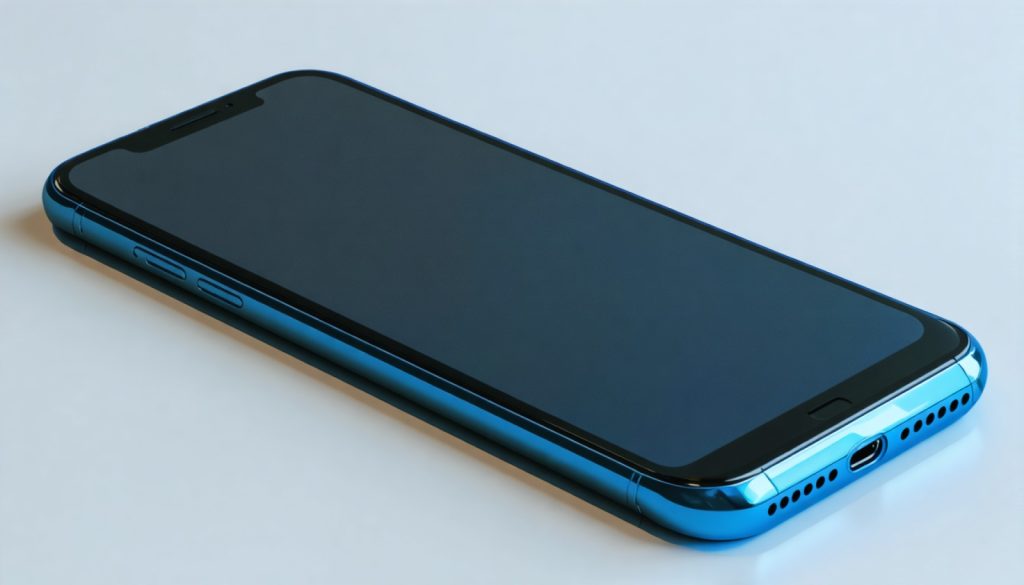
- Fairphone’s Impact 2024 report highlights key sustainability challenges in the smartphone industry, emphasizing ethical practices and supply chain transparency.
- 80% of a phone’s carbon emissions occur during production, while only 22% of e-waste is recycled, underscoring a critical environmental issue.
- Fairphone has reduced its carbon footprint by 48% since 2022, promoting modular designs that extend product lifespan.
- Its approach includes responsible sourcing and providing living wage bonuses to improve conditions for mining communities.
- Despite a higher price, Fairphone emphasizes value beyond specs, appealing to consumers seeking sustainable innovation.
- In 2024, Fairphone sold 103,053 units, indicating demand for environmentally-conscious technology amidst a competitive market.
- The brand challenges customers to rethink value, focusing on devices as partners in sustainability, not mere gadgets.
A beacon of hope arises from the labyrinthine world of electronics, where shimmering promises of sustainability often flicker and fade. Dutch company Fairphone, with its bold ideals, takes the stage with “Fairphone’s Impact 2024,” a sweeping report that sheds light on the murky corners of the smartphone supply chain. It’s a narrative designed for our era—efficient, ethical, and, as Earth Day 2025 resonates through the calendar, irreversibly urgent.
Beneath the sleek veneer of our pocket-sized lifelines lies a truth that must be confronted. The sordid dance of rare earth elements, mined under lenient conditions, leaves global scars. Fairphone’s report captures this imagery vividly, pinpointing a staggering statistic: 80% of a phone’s carbon emission is etched during its creation, while shockingly, only a paltry 22% of e-waste meets recycling. Herein lies the problem—a challenge Fairphone interestingly wants to meet head-on.
Amidst daunting figures, there’s a glimmer of change. Fairphone has managed to slash its carbon footprint by an impressive 48% since 2022, spearheading a conscious collective’s charge in electronics. Their trade isn’t solely the cogs and components of technology but a promise of ethical integrity. The company conjures an oceanic tableau, emphasizing ocean freight over sky-bound routes, thereby affording our planet a negligible repast.
Imagine a phone so modular it invites play—where even a child can switch a broken screen, where the walls around planned obsolescence begin to crumble. For Fairphone, longevity isn’t marketing lingo; it’s the axis upon which their creations rotate. Come battery death or screen fracture, swap it like a breeze and continue on—a rarity in a market brimming with fragility.
Yet, virtue carves no simple paths. Embracing responsible sourcing extends beyond the assembly line, back to mines where Fairphone intervenes, striving to uplift. By providing living wage bonuses, they seek not only to fuel devices but to nurture lives, tackling the precarious underbelly of mining with resolve.
In the aisles of consumer electronics, price often squats at the crux of all decisions. Fairphone 5’s not-so-modest price tag raises brows: an ethical premium that thwarts superficial comparisons to cutting-edge peers. It costs more than its equally specced contemporaries, yet it wears its ethics on its sleeve, daring the socially conscious to consider value that transcends dollars and cents.
As hybrid habits sway alongside global events, Fairphone appeals to the awakened consumer—one who yearns not just for a device but a symbol of sustainable shifts. The company reports a surprising triumph: 103,053 Fairphones woven into user lives in 2024, echoing a clear call for sustainable innovation even amidst a market allegedly contracting.
Fairphone beckons those who seek something tangible beyond the allure of a yearly upgrade. As the dust settles from “Fairphone’s Impact 2024,” consider what it means for your device to be more than a tool—a partner in sustainable progress. In this dance of commerce and conscience, perhaps the true value isn’t easily quantified, but infinitely lived.
Is Fairphone the Future of Sustainable Smartphones?
Unveiling the Fairphone Journey: Ethical Innovation and Sustainability
Fairphone is a pioneer in the niche yet growing sector of sustainable electronics. Their bold efforts are focused not just on creating devices but on reshaping the electronics supply chain to be more ethical and environmentally friendly. Here are some additional insights and intriguing facts about Fairphone and the broader context of sustainable electronics:
The Fairphone Ethos: Beyond Just Technology
1. Modular Design: Fairphone’s design philosophy revolves around easy repair and longevity. The modular architecture allows users to replace parts like the battery or screen without specialized tools or technical know-how. This design ethos significantly extends the phone’s lifespan compared to traditional smartphones, aligning with principles of a circular economy.
2. Reducing E-Waste: The revelation that only 22% of e-waste is recycled is alarming. Fairphone attempts to mitigate this by ensuring that their products are easy to disassemble and recycle. Their commitment to reducing e-waste is also visible in the significant reduction in carbon emissions—by 48% since 2022—highlighting their leadership in sustainable practices.
3. Responsible Sourcing: Fairphone stresses ethical sourcing of materials, like ensuring that minerals are conflict-free. The company’s initiative to provide living wage bonuses to miners underlines their commitment to social responsibility, aiming to improve the livelihoods of workers in the supply chain.
Fairphone in the Market: Controversies and Comparisons
1. Pricing and Segment: Fairphone’s devices, particularly the Fairphone 5, are priced higher than similarly spec’d devices from mainstream brands. This “ethical premium” can be a contentious point for consumers who prioritize cost over sustainability. However, Fairphone targets the ethically conscious consumer, emphasizing value derived from ethical production and longevity.
2. Market Position and Growth: Despite a contracting market, Fairphone has seen increased integration with 103,053 units sold in 2024. This suggests a growing consumer base interested in sustainable technology. Their impact report showcases a shift in consumer behavior, towards valuing sustainability.
3. Real World Use Cases: Fairphone is particularly appealing in educational settings where students can learn about sustainability and ethics in technology through hands-on experience with modular phones. Organizations focused on reducing their carbon footprint might also favor Fairphone devices for their staff.
Predictions and Trends in Sustainable Electronics
1. Emergence of Sustainability in Consumer Electronics: As consumer awareness about environmental impacts grows, more companies might adopt practices similar to Fairphone. This includes modular designs, focus on recyclability, and ethical sourcing.
2. Policy Support: Governments and international organizations are increasingly enforcing stricter regulations on e-waste and ethical sourcing. Such policies could make sustainable practices a norm rather than a niche strategy.
Actionable Tips for Consumers
– Consider Longevity: Assess the lifespan and reparability of electronics before purchase. Opt for products that offer replaceable components or prolonged software support.
– Recycle and Reuse: Always recycle your old electronics responsibly. Many companies and local governments offer e-waste collection programs.
– Educate and Advocate: Spread awareness about the benefits of sustainable electronics and advocate for responsible consumerism in your community.
Related Links
For more on sustainable practices and innovative tech, visit Fairphone and explore their latest insights.
By choosing products like Fairphone, consumers are partaking in a broader movement toward a circular economy, where environmental impact is minimized, and ethical sourcing is prioritized. Each purchase decision echoes in the corridors of industry and sets the path for future technological advancements.



